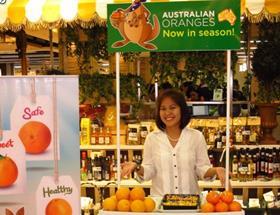
Global suppliers regard the Philippines as an exciting market, with its growing economy, and its young, health-conscious and increasingly affluent population.
The Philippine economy has improved dramatically over the past two years – illustrated by a 7.16 per cent GDP growth in 2013, one of the highest, if not the highest in South East Asia.
The country’s vast market is fuelled by the on-going development of the Philippine’s business process outsourcing (BPO) industry that has helped nourish a growing middle-class of busy, affluent, young professionals, and attracted rising numbers of expatriates.
Retail expansion
A burgeoning modern retail sector, featuring high-end shopping malls and a developing convenience store scene, makes the Philippines an even more tantalising export prospect.
Supermarket chains are opening large western-style stores in Metro Manila, Cebu, Davao and other key provincial cities, such as Bacolod, Cagayan de Oro and Iloilo, prompting Filipinos to shop more frequently and less in bulk than before, explains Austrade Manila’s Vanessa Driz-Perez.
Foreign retailers, like Dairy Farm Group, Family Mart and Alfamart of Indonesia, have started to set up shop too.
According to Austrade’s research, 60 per cent of fresh produce retail sales can be attributed to wet markets (traditional fresh food markets), but the market share of hypermarkets and superstores (which accounts for 40 per cent) is increasing.
“There is an ongoing retail expansion to widen consumer base and geographic reach,” says Driz-Perez. “The increasing urbanisation of the local population has changed the local retail food market, and is seen as the driver in the lifestyle change amongst consumers.”
Strong import growth
Major container shipping line Maersk-Filipinas said it handled double the volume of fresh fruits and vegetable imports in 2014 compared to the prior year.
“With the strong economy and increased buying power across all social classes, commodities, such as imported fresh fruits and vegetables, are now more accessible by the general public,” says Wilyer Rodil of Maersk-Filipinas.
Last year, apples from China topped the Philippine’s imported fruit bill in volume terms (73,337 tonnes), according to data from the Bureau of Plant Industries, followed by Chinese citrus (54,547 tonnes), and US grapes (25,067 tonnes).
In value terms, though, the US is ranked as the top supplier, followed by China, Australia and Vietnam, according to TradeMap.
Health on agenda
Jody Gadia of Robinsons supermarkets is confident demand for imported produce will increase as rising numbers of modern retail outlets push down prices and the current trend for healthy eating among young middle-class consumers gains momentum.
The country’s health-conscious middle class are boosting demand for salads and other fresh produce too, agree importers Catherine Posas and Kingson Chan of Dizon Farms and Deka Fresh, respectively.
This is creating sales opportunities for new imported fruit on the market, they believe. “Consumers are looking for higher quality fresh fruits,” says Chan. “Gone are the days when the Philippines is a dumping site for lower quality fruits.”
It is precisely for this reason that the Philippines holds so much interest for Australian shippers. “The Philippines is an exciting country because it is growing so fast,” says Citrus Australia’s Andrew Harty. “The standard of high-end supermarkets in Manila is world class, and prices are up there with anywhere else in world. This points to a population that is becoming rapidly more affluent, and is exactly the market we want to target.”



